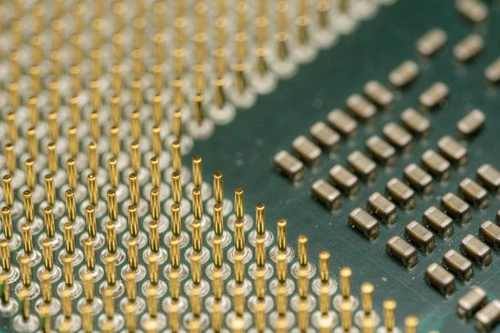Silicon carbide (SiC) is a material that has garnered significant attention due to its remarkable properties, such as high thermal conductivity, hardness, and resistance to oxidation. Among the different polytypes of silicon carbide, 4H-SiC stands out for its unique crystal structure and superior thermal conductivity. Understanding and measuring its thermal conductivity is crucial for its applications in electronics, power devices, and heat management systems. This article explores the various methods used to measure the thermal conductivity of 4H-SiC.
Introduction to 4H-SiC and Its Thermal Properties
4H-SiC is one of the most widely studied polytypes of silicon carbide, known for its hexagonal crystal structure that provides enhanced electrical and thermal properties compared to other forms of SiC. It is extensively used in high-power and high-temperature applications due to its ability to withstand extreme conditions. The thermal conductivity of 4H-SiC is a critical parameter for designing and optimizing devices that rely on efficient heat dissipation, such as power transistors, high-performance diodes, and advanced cooling systems.
Methods for Measuring Thermal Conductivity
Measuring the thermal conductivity of 4H-SiC involves several sophisticated techniques, each with its own set of advantages and limitations. These methods allow researchers and engineers to obtain accurate data essential for material characterization and application development.
1. Steady-State Methods
The steady-state methods are among the most traditional techniques used for thermal conductivity measurement. These methods rely on establishing a constant temperature gradient across the sample and measuring the heat flow. There are several steady-state techniques, including:
- Guarded Hot Plate Method: This method involves placing the material between two plates, one of which is heated. The temperature difference across the sample is used to calculate its thermal conductivity. This method is widely used for its accuracy in measuring materials with high thermal conductivity.
- Heat Flow Meter Method: A simpler variation of the guarded hot plate method, this technique involves measuring the heat flux through the sample and calculating its thermal conductivity based on the temperature difference.
Both methods are effective but can be time-consuming and require large sample sizes, making them less ideal for small or delicate samples of 4H-SiC.
2. Transient Methods
Transient methods, also known as non-steady-state methods, measure thermal conductivity by analyzing the time-dependent response of a material to a thermal pulse. These methods are often preferred for their ability to measure thermal properties quickly and with high precision.
- Laser Flash Method: The laser flash method involves irradiating one side of the 4H-SiC sample with a short laser pulse. The temperature rise on the opposite side is then measured over time, allowing the calculation of thermal diffusivity and, by extension, thermal conductivity. This method is widely used for its accuracy and ability to measure thin samples.
- Hot Disk Method: This method involves placing a sensor in contact with the material and applying a heat pulse. The response of the material is monitored, and thermal conductivity is determined based on the rate of temperature change. It is particularly effective for materials with high thermal conductivity like 4H-SiC.
Transient methods provide rapid and precise measurements, making them highly suitable for advanced research and development processes involving 4H-SiC.
3. 3-ω Method
The 3-ω method is a sophisticated technique used to measure the thermal conductivity of thin films and small samples. In this method, an alternating current is applied to a sample, creating a periodic temperature oscillation. The frequency response of the temperature oscillation is then used to determine the thermal conductivity. This method is particularly valuable for characterizing the thermal properties of 4H-SiC in microelectronics and nano-devices.
Factors Affecting Thermal Conductivity Measurements of 4H-SiC
Several factors can influence the accuracy of thermal conductivity measurements of 4H-SiC. These factors must be considered during testing to ensure reliable data.
- Temperature: The thermal conductivity of 4H-SiC varies with temperature, and measurements must be conducted within a specific temperature range to achieve accurate results.
- Sample Preparation: The surface quality and geometry of the 4H-SiC sample play a crucial role in the measurement accuracy. Imperfections such as cracks or surface roughness can lead to erroneous results.
- Crystal Orientation: The thermal conductivity of 4H-SiC can differ depending on the orientation of the crystal lattice. Measurements should account for the alignment of the sample relative to the crystal structure.
Conclusion
Accurately measuring the thermal conductivity of 4H-SiC is essential for optimizing its use in various applications. Each measurement method has its strengths and limitations, making it necessary to choose the appropriate technique based on the sample size, material properties, and desired level of precision. As technology advances, the development of more efficient and precise methods will continue to enhance the capabilities of 4H-SiC in next-generation electronics and high-performance devices.
